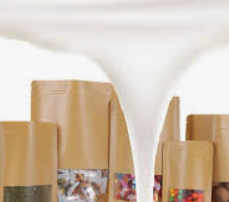Update:The addition of additives in water-based polyurethane resin is to improve the production process and product performance...
The addition of additives in
water-based polyurethane resin is to improve the production process and product performance, such as giving water-based polyurethane new and special properties, extending the service life of water-based polyurethane, expanding the scope of application, improving processing efficiency, and accelerating the reaction process. There are many types of water-based polyurethane additives, and the scope of application is very large, but there are certain rules for the selection of additives.

1. Compatibility of additives and products This is the first consideration in the selection of additives. In principle, the additives are required to be compatible with the material (similar in structure) and stably (no new substances are generated) to exist in the material, otherwise it is difficult to play the role of additives.
2. Persistence of additives The additives added to the material must maintain the original properties of the additives for a long time, and the ability of the additives to maintain the original properties under the conditions of use is called the durability of the additives. There are three ways for additives to lose their original properties: volatilization (molecular weight), pumping (solubility in different media), and migration (solubility of different polymers). The additives should have water resistance, oil resistance and solvent resistance at the same time.
3. The adaptability of additives to processing conditions During the processing of materials, additives should not change their original properties and will not cause corrosion to the processing equipment and construction tools.
4. The adaptability of the additives to the use of the product. The additives should meet the special requirements of the material in the use process, especially the toxicity of the additives.
5. Synergistic and antagonistic effects in the combination of additives In order to obtain better results, the use of additives is mostly compounded. When using compounding, there are two situations: one is compounding to achieve good results, and the other is for multiple purposes, such as leveling and defoaming, as well as gloss and antistatic . It is important to note that in the same material, there will be synergistic effects between additives (total effect is greater than the sum of effects of individual use), additive effect (total effect is equal to the sum of effects of individual use) and antagonistic effect (total effect) It is less than the sum of the effects of single use), so it is best to produce synergistic effects when compounding to avoid confrontation effects.
Some additives are added in the waterborne polyurethane manufacturing process. Pay attention to its role in the storage, construction, and use stages, and consider and evaluate its role and impact in the next stage. For example, wetting and dispersing agents are added during the operation of water-based polyurethane paint, which play a certain role in storage and construction, and it is also beneficial to the color of the paint film. There is often a dominant effect, which simultaneously causes a series of simultaneous positive effects. For example, when silica is used, it has a matting effect, but also has a positive effect such as absorbing water and preventing adhesion on the surface. In addition, a negative effect may be produced when a certain additive is applied. For example, if a silicon-containing defoamer is added, its defoaming effect is obvious, and a good positive effect can be obtained, but at the same time, whether there is shrinkage or turbidity should be evaluated. The effect does not affect the recoatability and so on.
In short, the use of additives is still a practical process in the final analysis, and the quality of the results should be used as the only criterion for evaluation.
